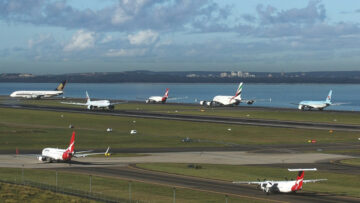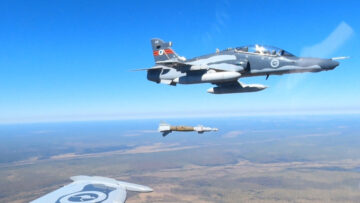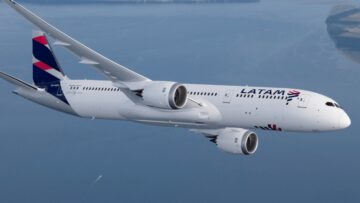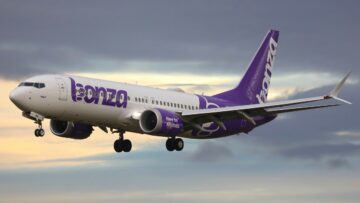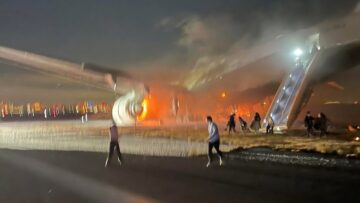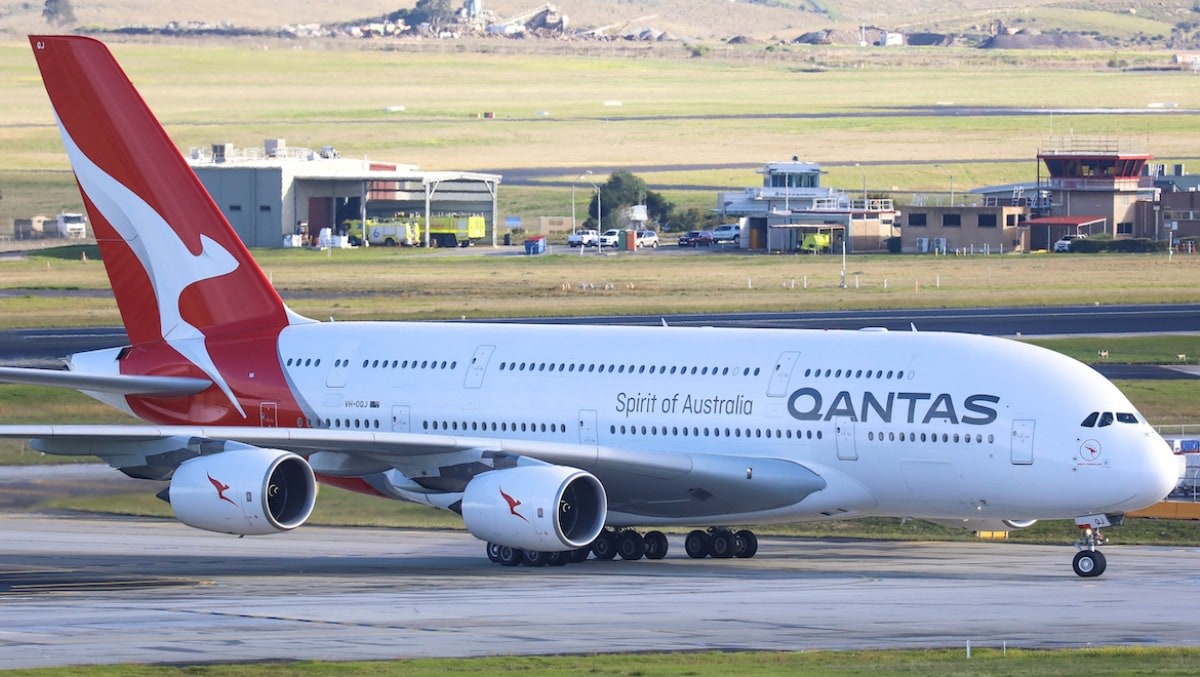
A Qantas A380 made an unscheduled landing in Athens overnight after a passenger was taken “critically unwell” onboard and reportedly received CPR.
The aircraft, VH-OQJ, departed Sydney for London via Singapore at 5:54pm on 2 January and was due to arrive in the British capital at 6:15am the next day, local time, before being diverted to the Greek capital.
“Our flight from Singapore to London made an unscheduled landing at Athens International Airport in Greece after a passenger became critically unwell on the flight,” Qantas said.
“Crew and passengers provided life-saving first aid onboard and, on the advice of medical experts, the flight diverted so the passenger could receive emergency medical treatment.”
Passengers were put up in a hotel overnight as the Flying Kangaroo was unable to schedule a new flight straight away. A fresh service will now depart on Wednesday afternoon.
“We understand this delay would be incredibly frustrating for passengers, and we thank them for their understanding.”
It comes weeks after an A380 flying the same route, QF1, made an emergency landing in Baku when a sensor light alerted pilots to the possibility of smoke in the cargo hold. The aircraft turned around above Tbilisi, Georgia, before touching down in Azerbaijan.
Heydar Aliyev International Airport, in Baku, has one of the longest runways in the area and is a popular choice for aircraft to make emergency landings. It was met there by emergency services.
PROMOTED CONTENT
Investigations later revealed no evidence of smoke, meaning the incident was due to a fault with the sensor and a false alarm.
Qantas dispatched a recovery flight, which landed in the British capital on Christmas Day.
The grounded aircraft, VH-OQH, was later deemed safe to fly and returned to commercial service days later.
Qantas grounded its entire fleet of A380s during the pandemic, with most sent to the Victorville desert ‘boneyard’.
The Flying Kangaroo has been slowly returning them to active service, though plans to permanently scrap two.
So far, VH-OQB, VH-OQD, VH-OQH, VH-OQK and VH-OQJ have returned to active operations, but VH-OQC and VH-OQI remain in the desert.
VH-OQL and VH-OQA are currently in Abu Dhabi, where they are receiving a cabin upgrade. VH-OQF has already been dismantled, with speculation that it will be joined on the scrap heap by VH-OQE.
VH-OQA, Qantas’ first A380, was involved in arguably Australian aviation’s most serious-ever safety incident, when its Rolls-Royce Trent 900 engine exploded shortly after it took off, causing a major fire in November 2010.
Despite significant structural and systems damage, Captain Richard de Crespigny and his colleagues in the flight deck — Qantas’ first A380 named after Australian aviation legend Nancy-Bird Walton — managed to return to Singapore Changi Airport for a safe landing.
No passengers or crew were injured.
Investigators later found the failure was due to a fatigue crack in an oil feed-pipe in the number two engine of the aircraft. This led to an internal oil leak and fire, with the turbine disc eventually bursting through the engine casing.
VH-OQA, meanwhile, underwent significant repairs after the incident that took 16 months to complete and cost $139 million before it eventually returned to service in April 2012.
Qantas chief executive, Alan Joyce, this year used the incident to reject calls for airlines to have just one pilot in the cockpit of its aircraft.
“We had five amazing pilots in the cockpit, and without that, I don’t think that aircraft would have landed safely,” he said in a new interview. “We know that, and we’re very conscious of it.”
- SEO Powered Content & PR Distribution. Get Amplified Today.
- Platoblockchain. Web3 Metaverse Intelligence. Knowledge Amplified. Access Here.
- Source: https://australianaviation.com.au/2023/01/qantas-a380-lands-early-after-passenger-receives-cpr/
- a
- above
- abu dhabi
- active
- advice
- After
- Aid
- aircraft
- Airlines
- airport
- Alan
- alarm
- already
- amazing
- and
- April
- AREA
- around
- Australian
- Australian Aviation
- aviation
- before
- British
- capital
- Cargo
- causing
- chief
- choice
- Christmas
- Cockpit
- colleagues
- COM
- commercial
- complete
- conscious
- Cost
- could
- crack
- Currently
- day
- Days
- delay
- Dhabi
- Dont
- down
- during
- Early
- emergency
- Engine
- Entire
- eventually
- evidence
- executive
- experts
- Failure
- fatigue
- Fire
- First
- FLEET
- flight
- flying
- found
- fresh
- from
- frustrating
- Greece
- hold
- hotel
- HTML
- HTTPS
- in
- incident
- incredibly
- internal
- International
- involved
- IT
- January
- joined
- just one
- Know
- landing
- lands
- leak
- Led
- light
- local
- London
- made
- major
- make
- managed
- meaning
- Meanwhile
- medical
- million
- months
- most
- Named
- New
- next
- November
- November 2010
- number
- Oil
- Onboard
- ONE
- Operations
- overnight
- pandemic
- permanently
- pilot
- Pilots
- plans
- plato
- Plato Data Intelligence
- PlatoData
- Popular
- possibility
- provided
- put
- receive
- received
- receives
- receiving
- recovery
- remain
- return
- returning
- Revealed
- Richard
- Rolls-Royce
- Route
- safe
- safely
- Safety
- Said
- same
- schedule
- service
- Services
- Shortly
- significant
- Singapore
- Slowly
- Smoke
- So
- speculation
- straight
- structural
- sydney
- Systems
- The
- The Area
- their
- this year
- Through
- time
- to
- touching
- treatment
- turbine
- understand
- understanding
- upgrade
- via
- Wednesday
- Weeks
- which
- will
- without
- would
- year
- zephyrnet

